Powers and Roots Worksheets
Calculating Using Standard Form
Year groups: 7, 8
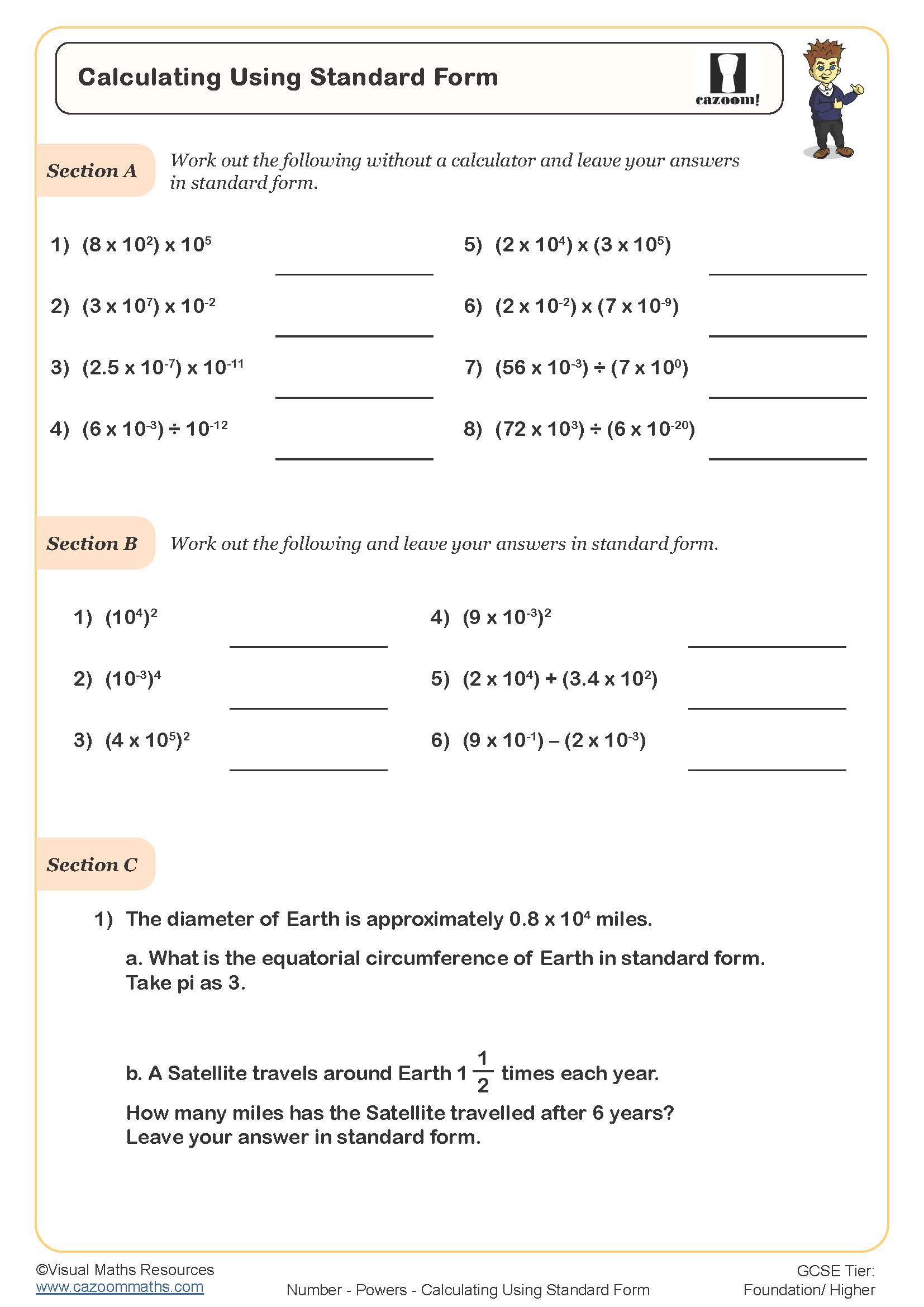
Calculations Using Indices (A)
Year groups: 7, 8
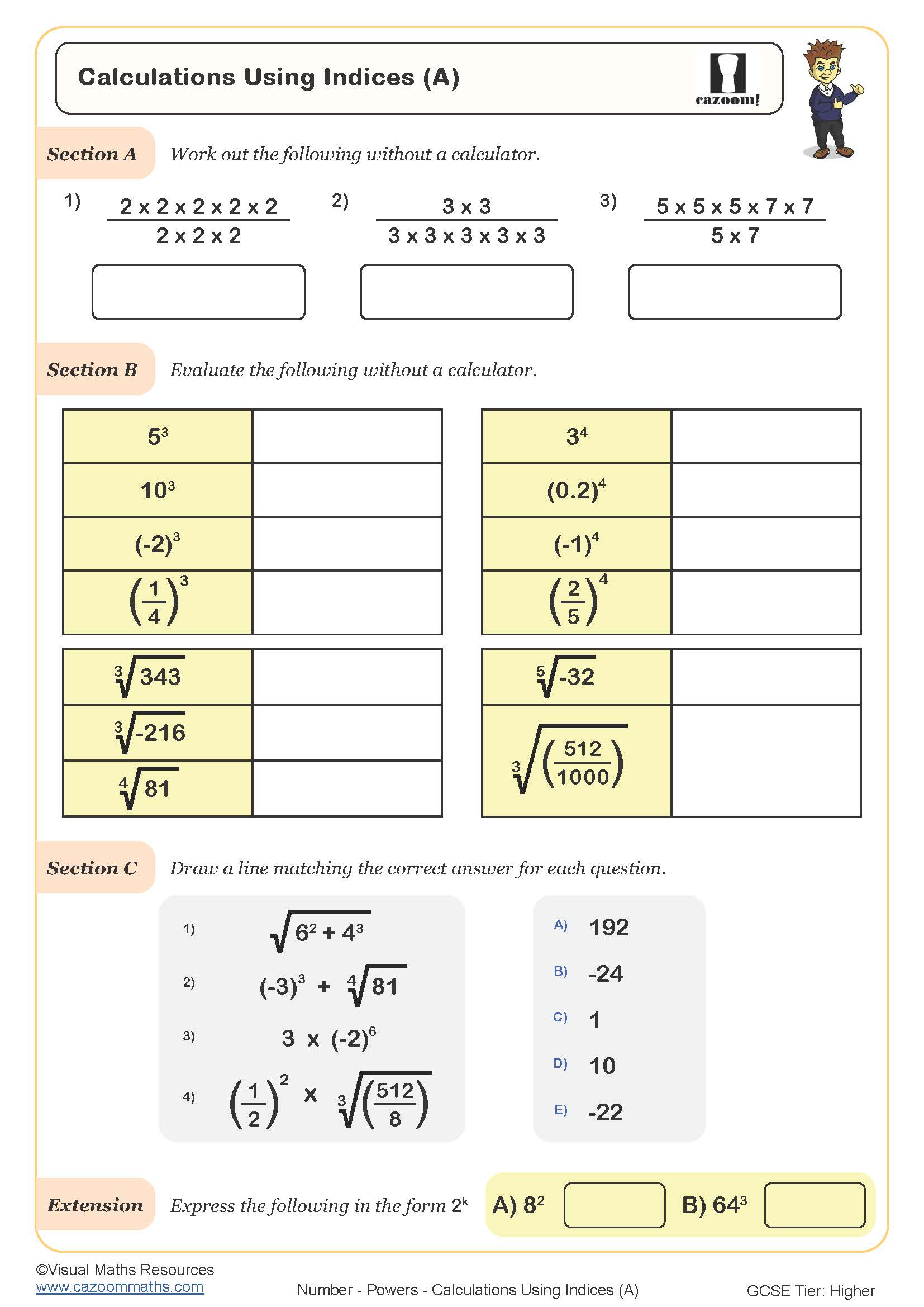
Converting from Standard Form
Year groups: 7, 8
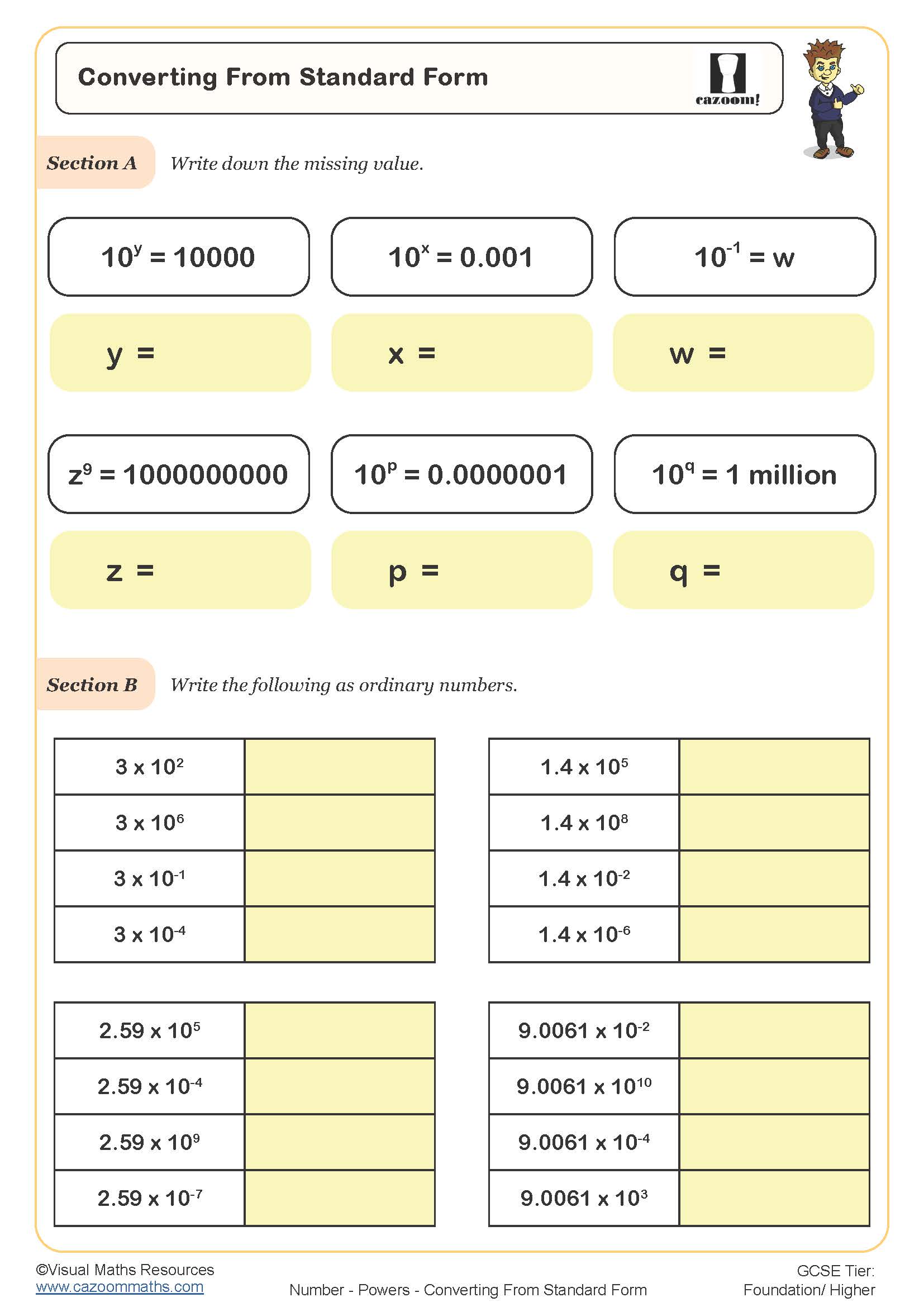
Cube Numbers
Year groups: 7, 8
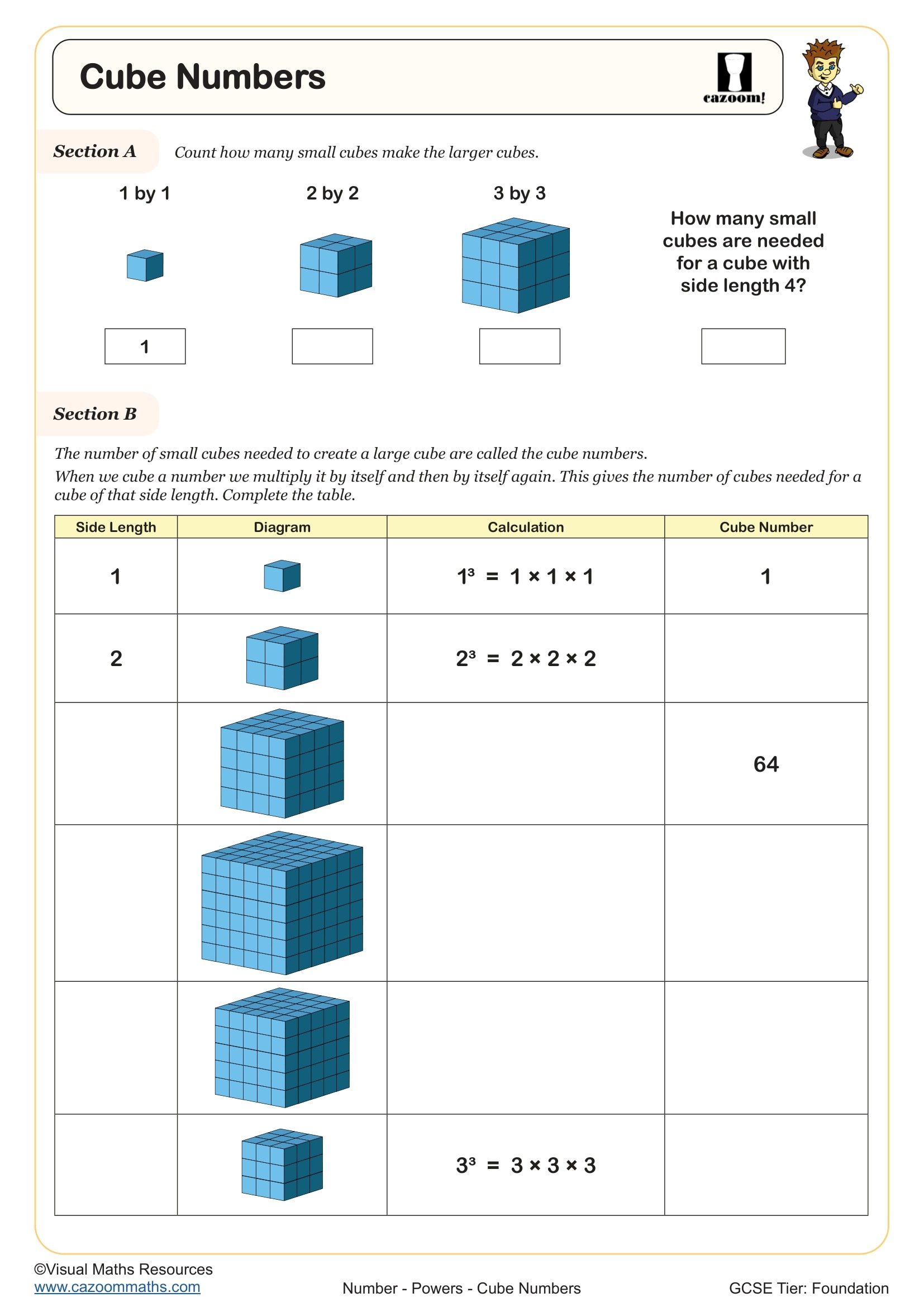
Estimating Powers and Roots
Year groups: 7, 8
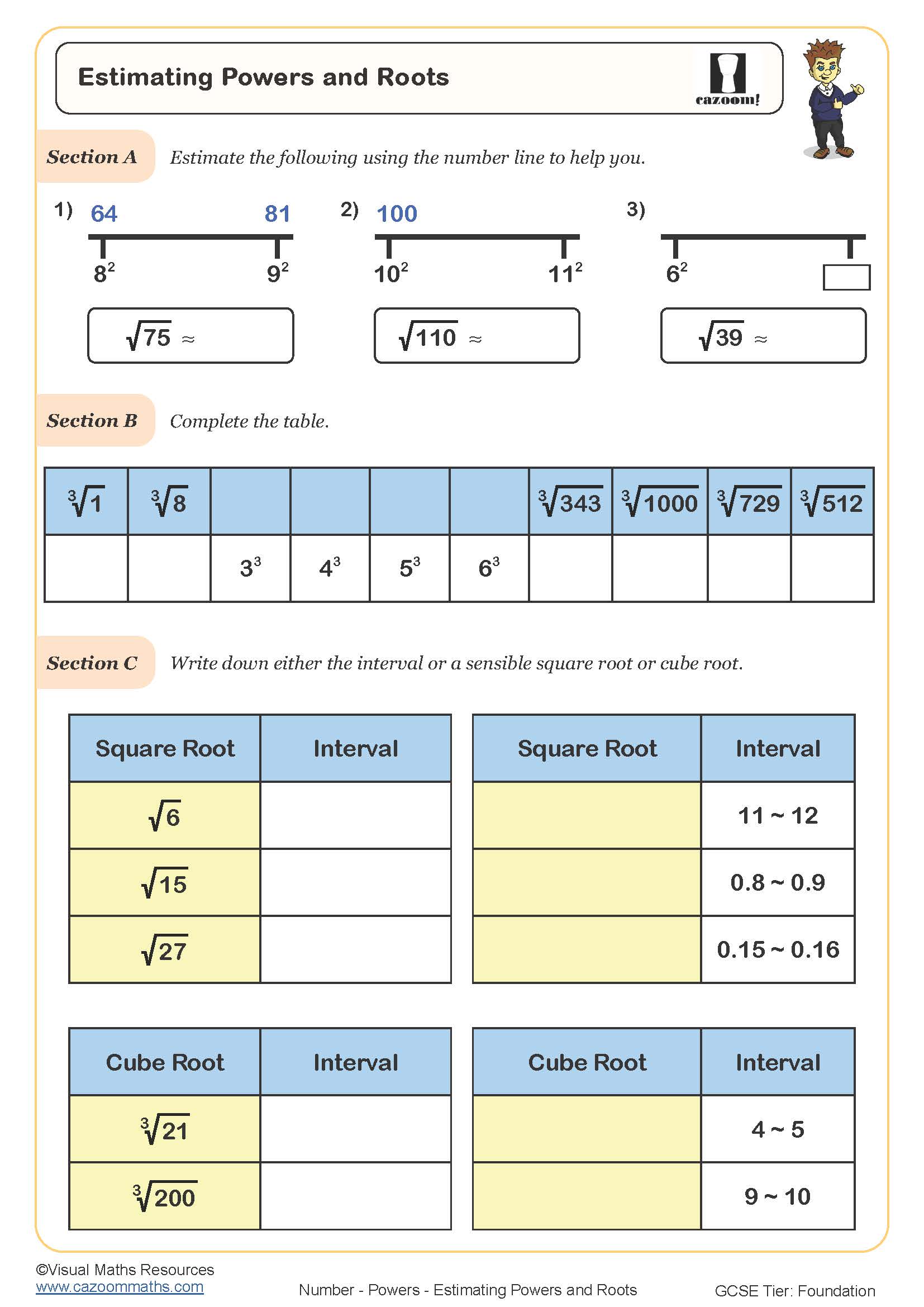
Estimating Square Roots
Year groups: 7, 8
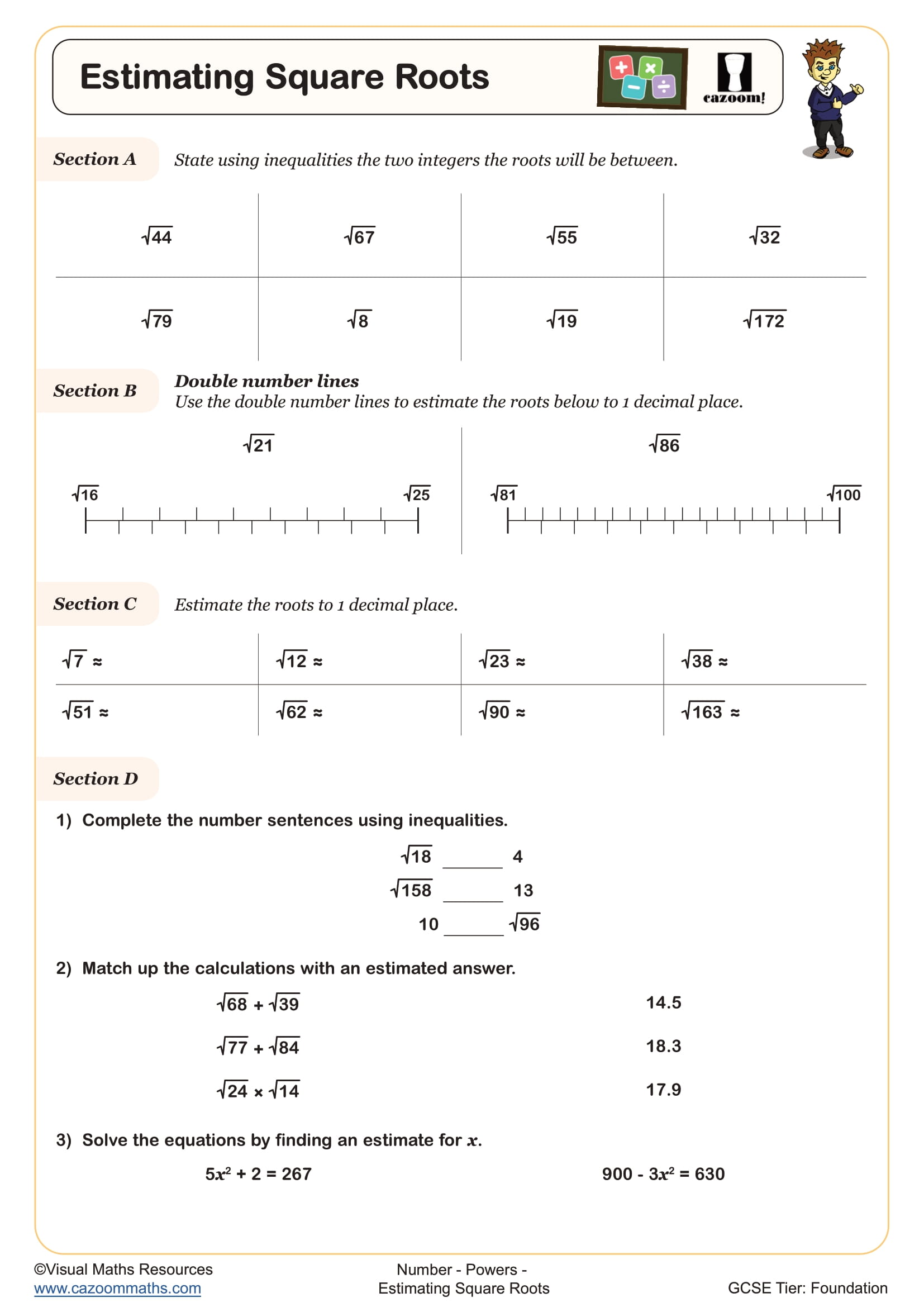
Finding Square and Nth Roots
Year groups: 7, 8
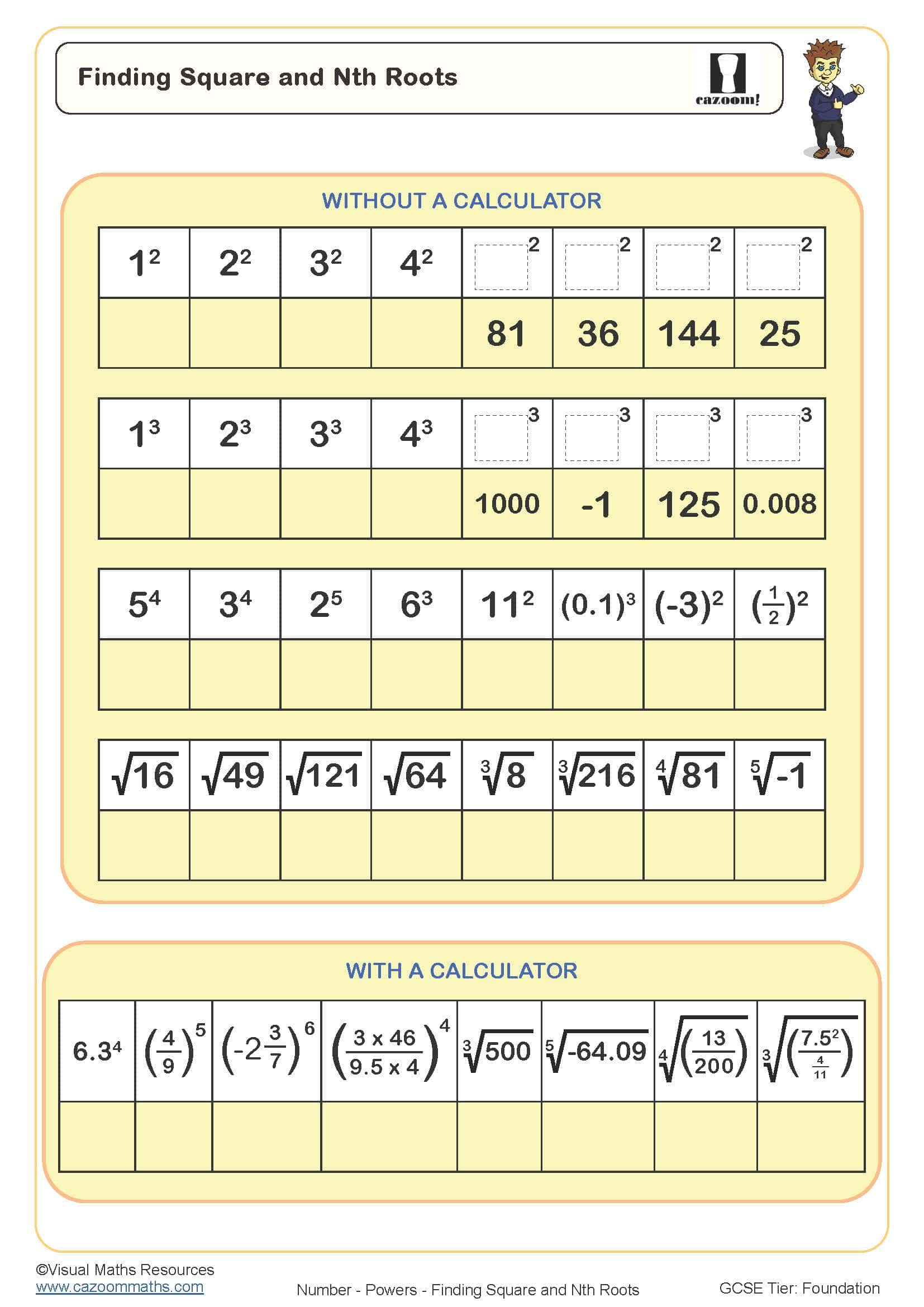
Multiplying and Dividing by 10, 100 and 1,000 Codebreaker
Year groups: 7, 8
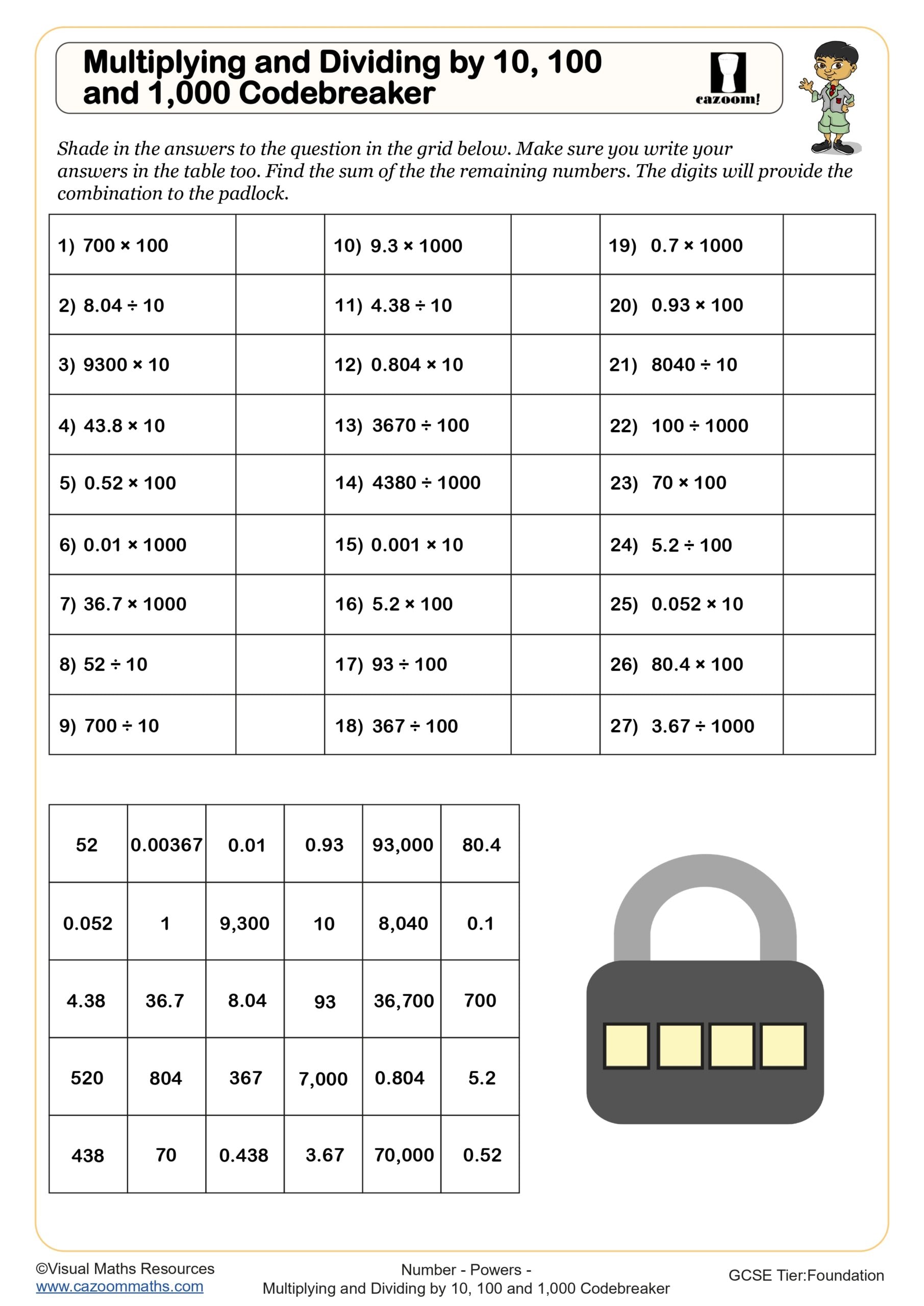
Multiplying and Dividing by Powers of Ten (A)
Year groups: 7, 8
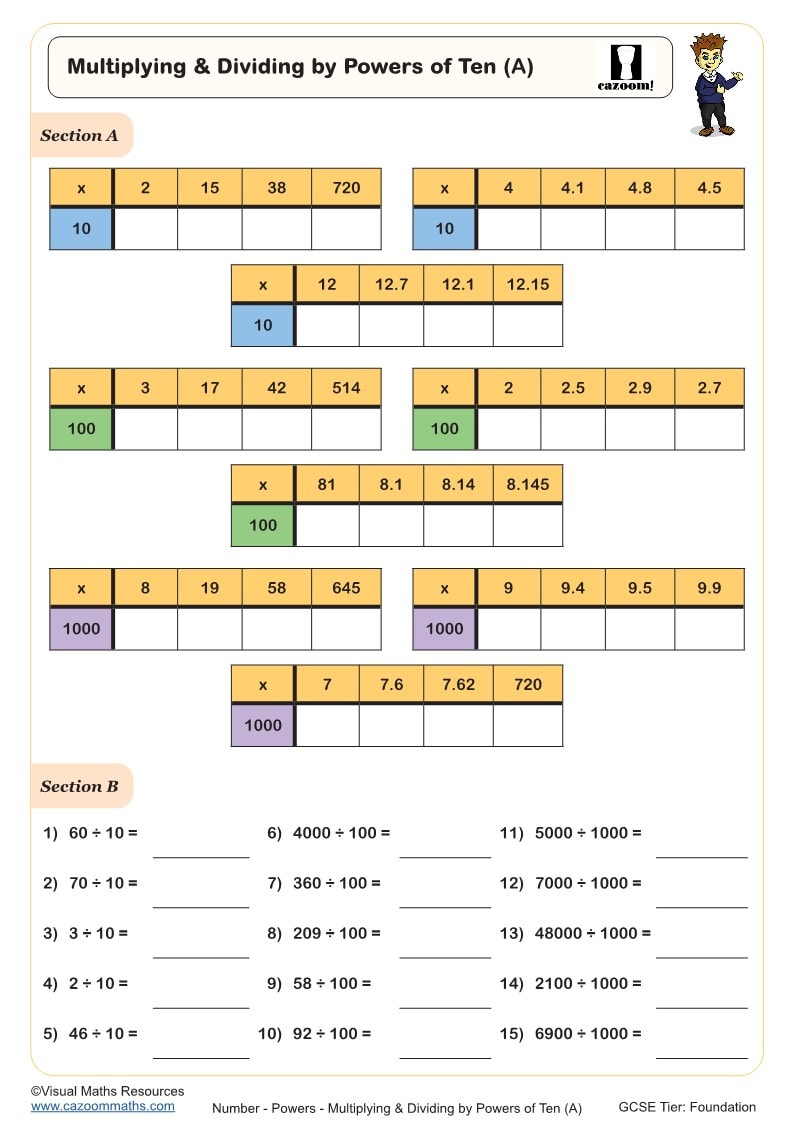
Multiplying and Dividing by Powers of Ten (B)
Year groups: 7, 8
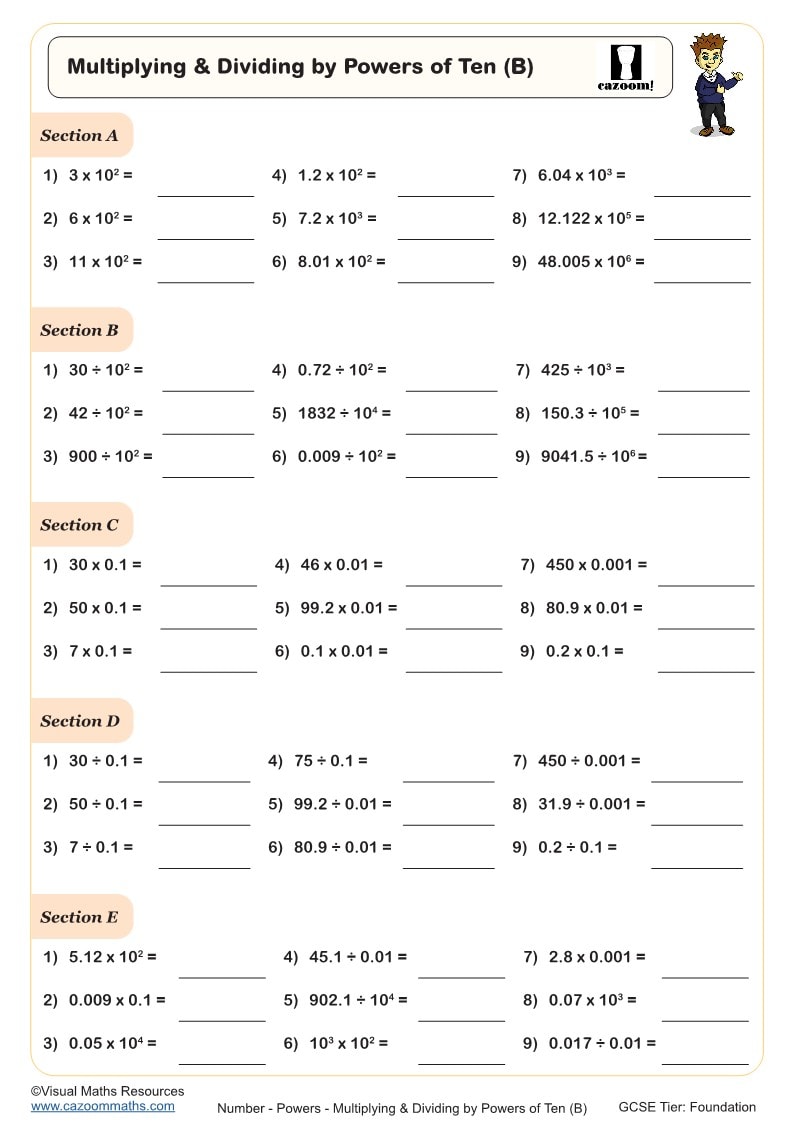
Multiplying and Dividing by Powers of Ten 15 Minute Challenge
Year groups: 7, 8
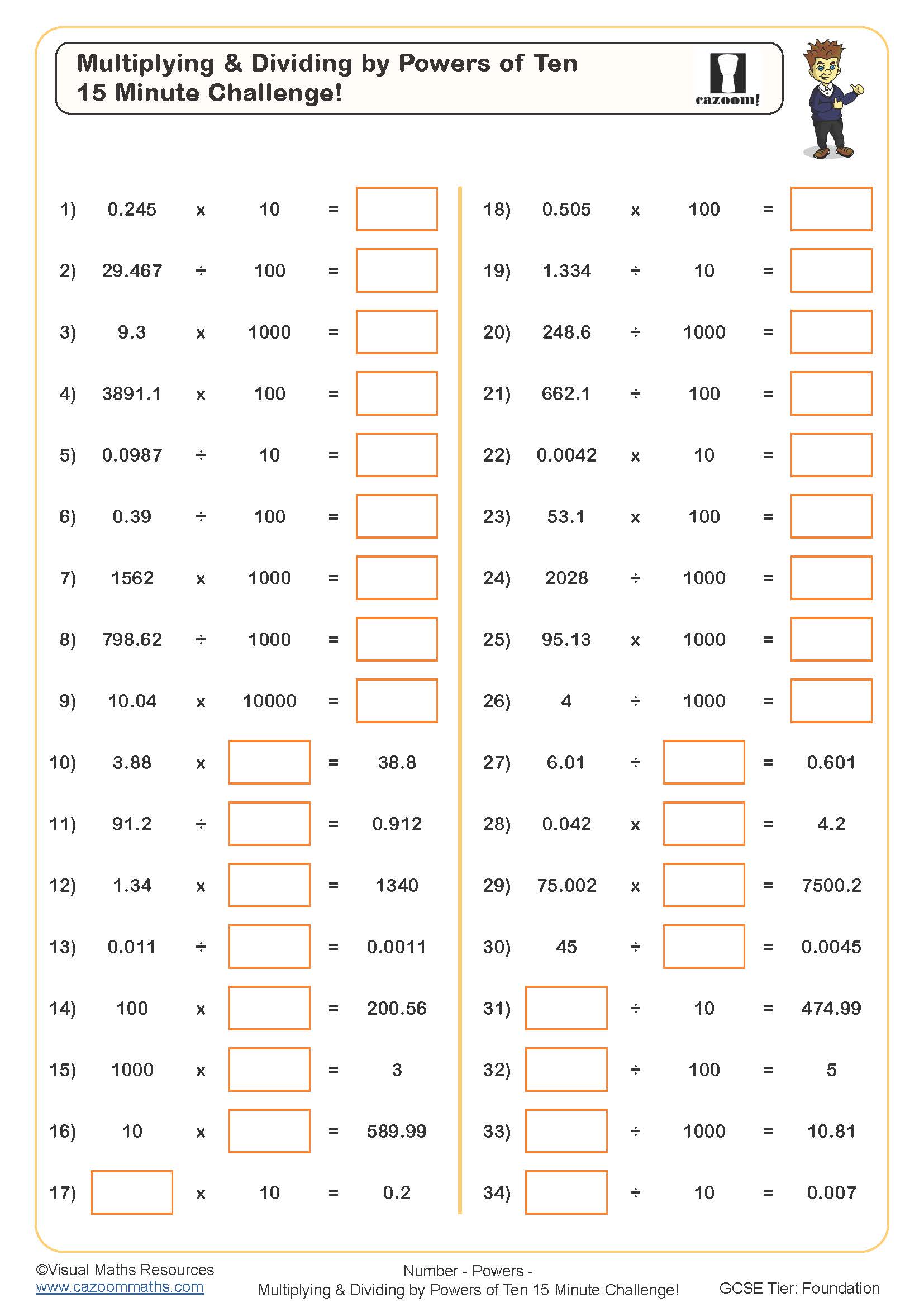
Multiplying and Dividing by Ten
Year groups: 7, 8
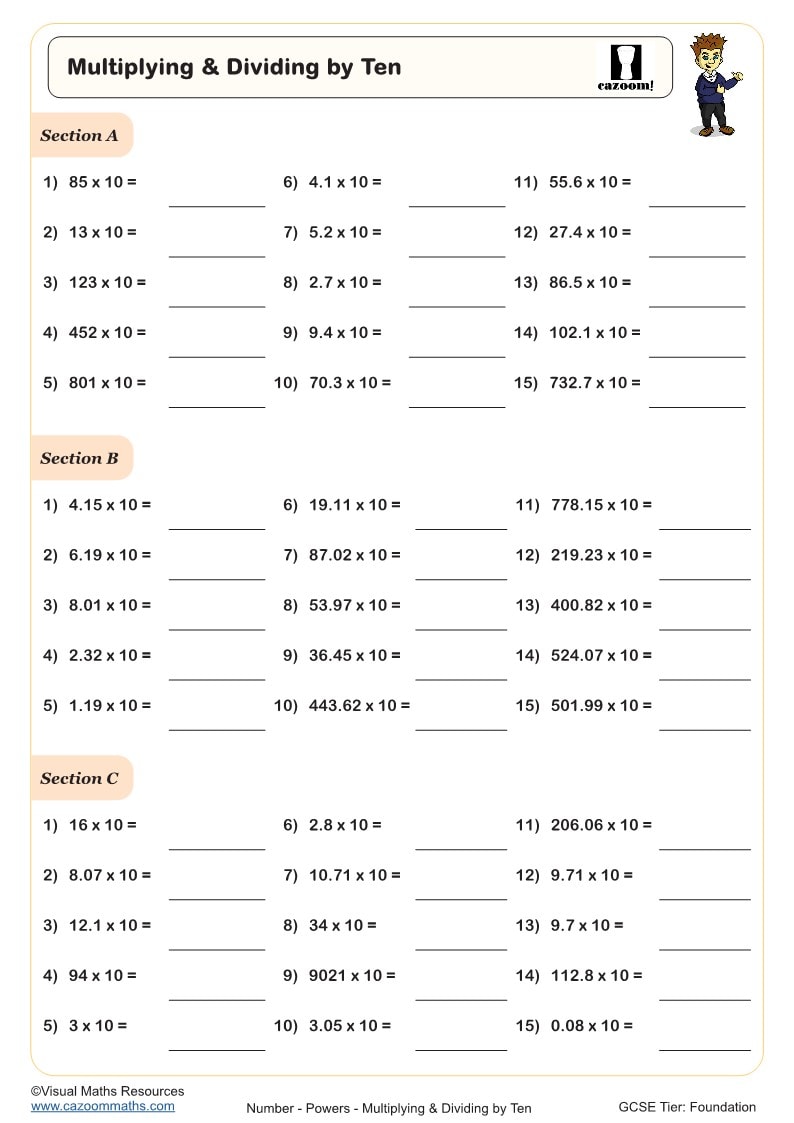
Powers of Ten Problem Solving
Year groups: 7, 8
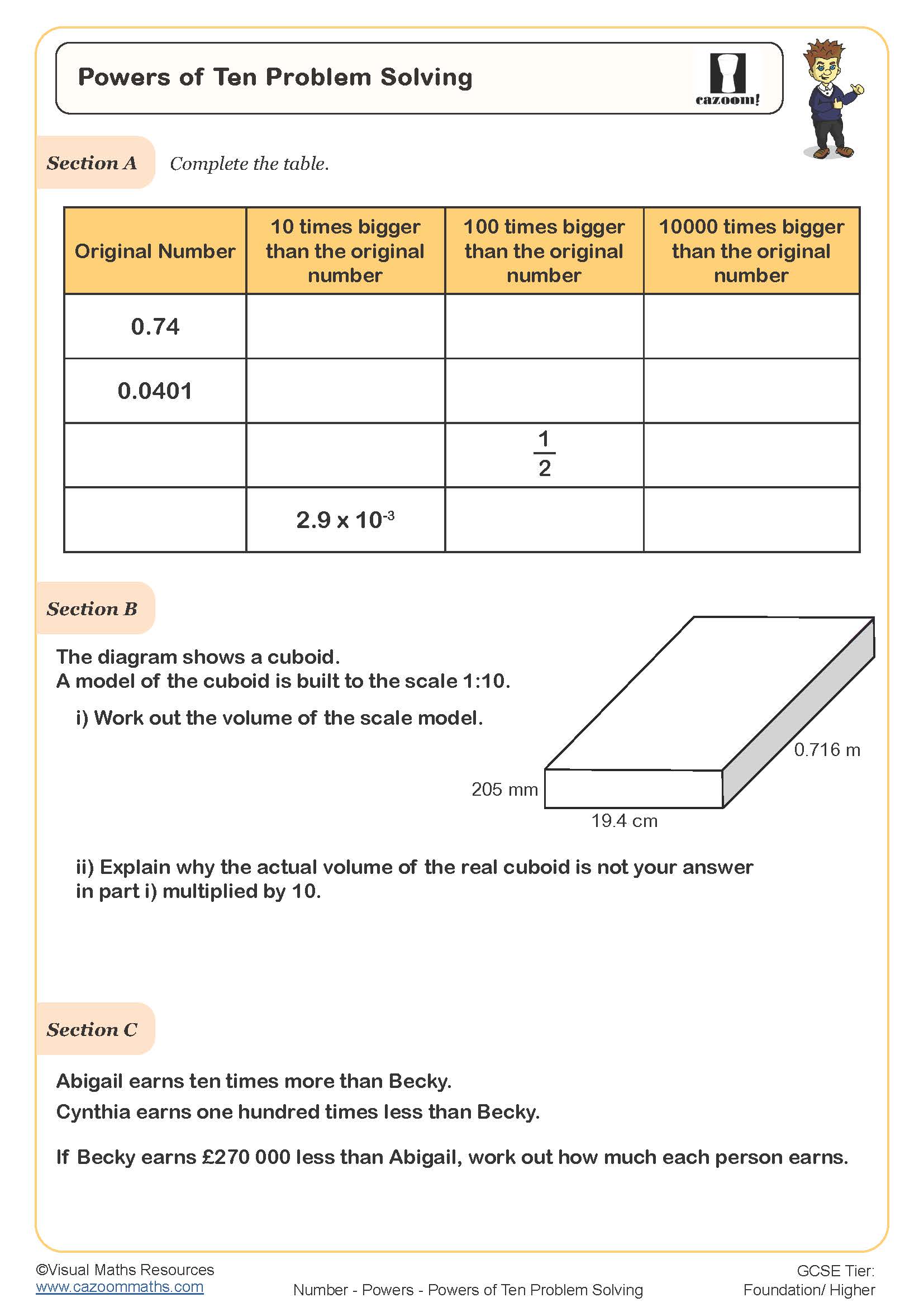
Recognising Standard Form
Year groups: 7, 8
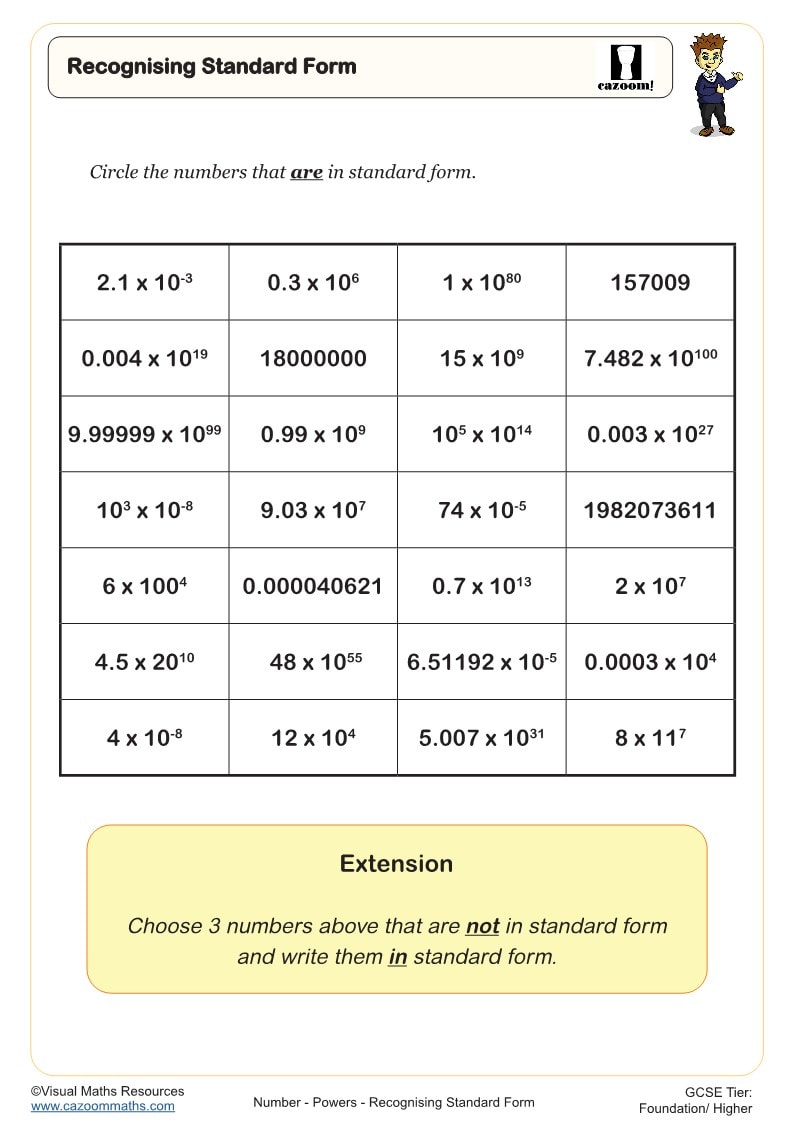
Spotting Standard Form
Year groups: 7, 8
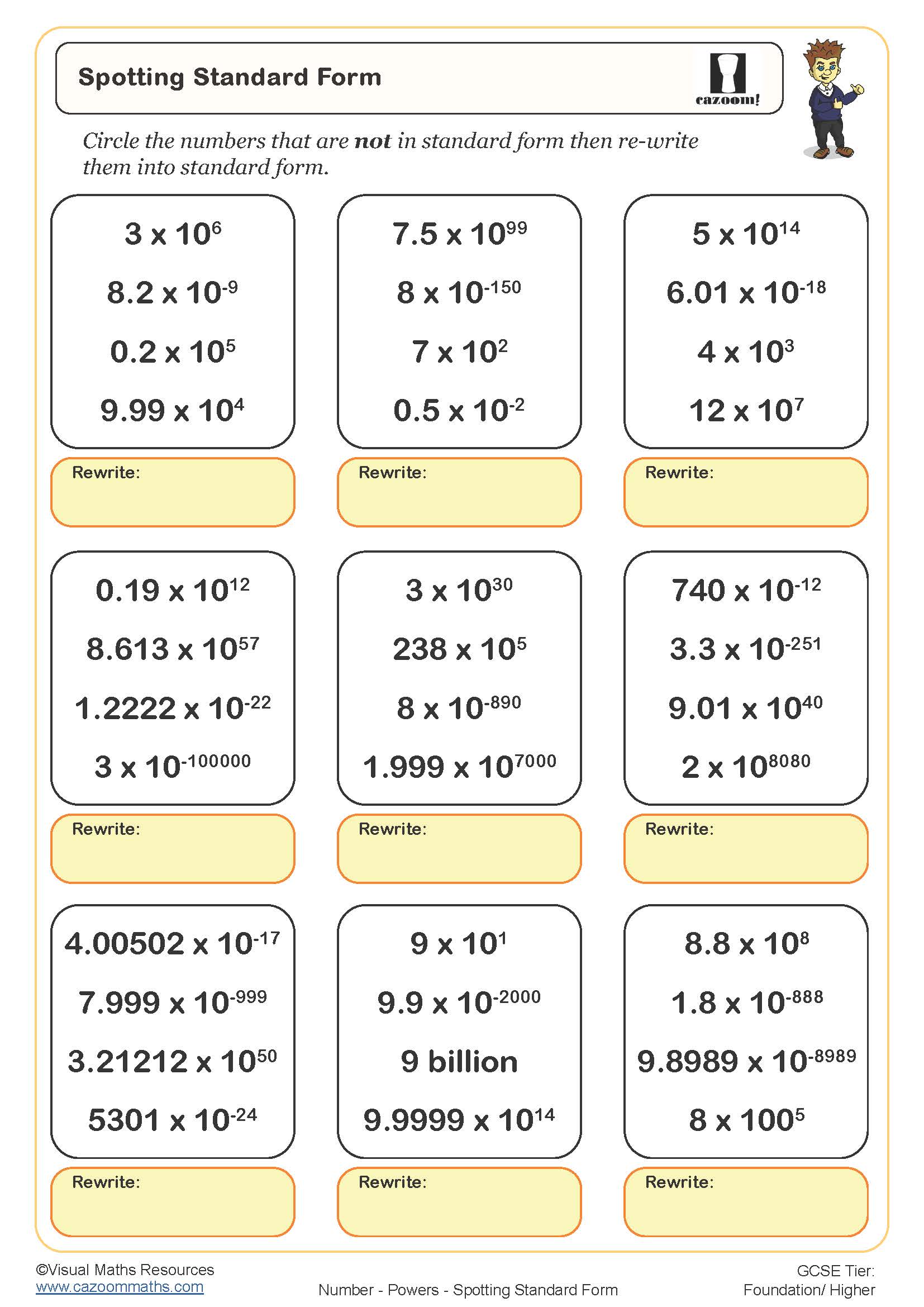
Square Numbers
Year groups: 7, 8
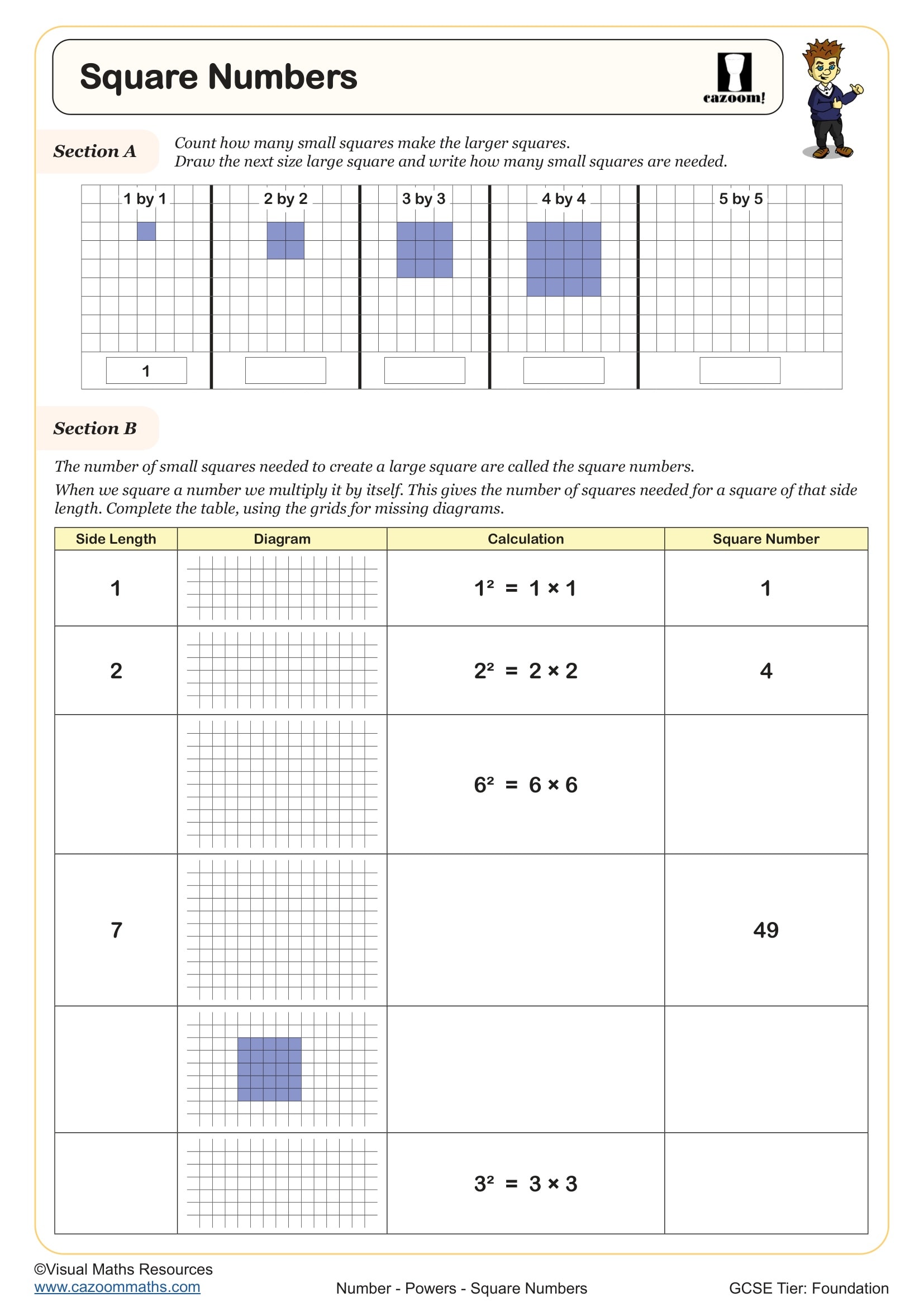
Square Numbers, Cube Numbers and Other Powers
Year groups: 7, 8
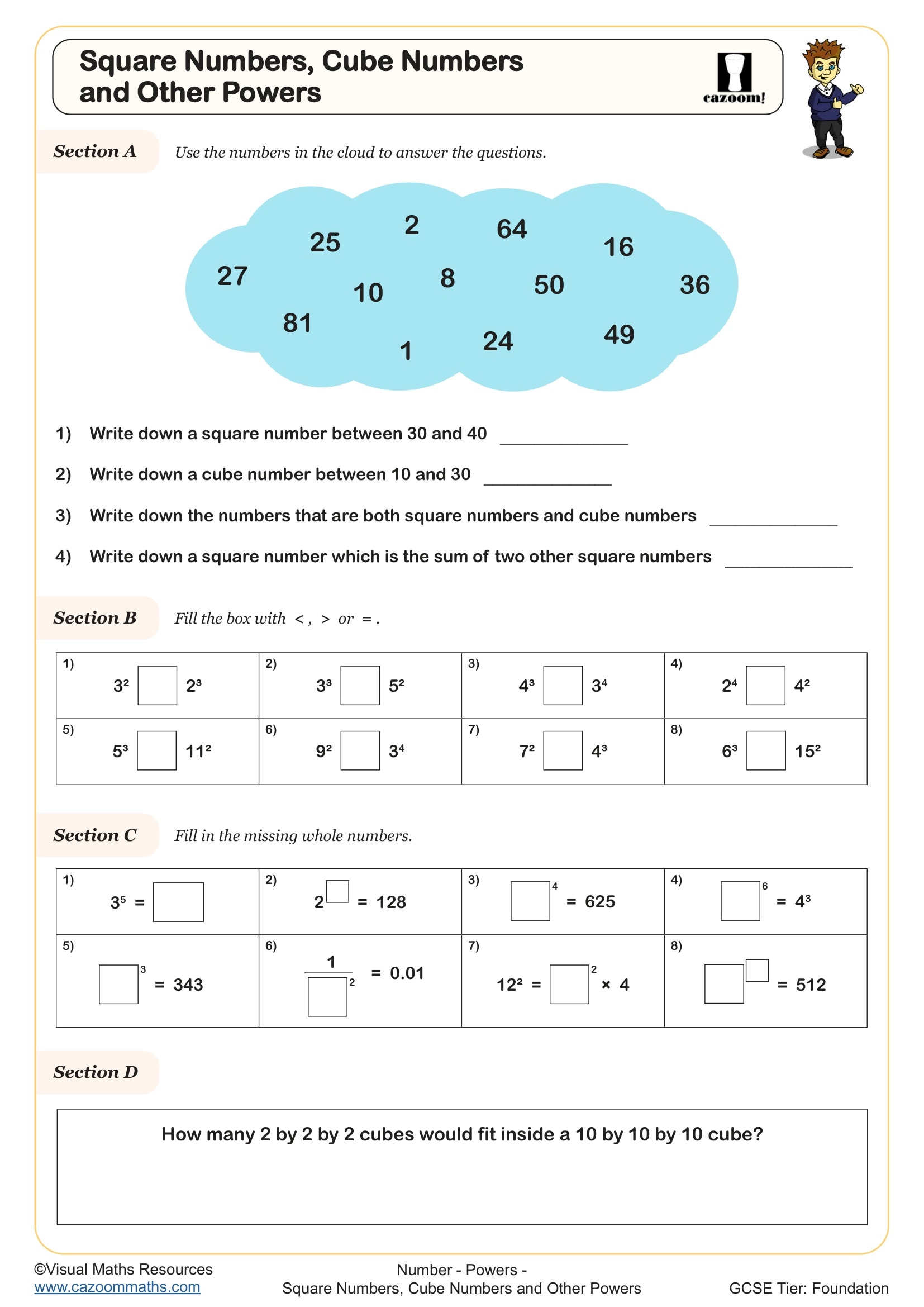
Standard Form (A)
Year groups: 7, 8
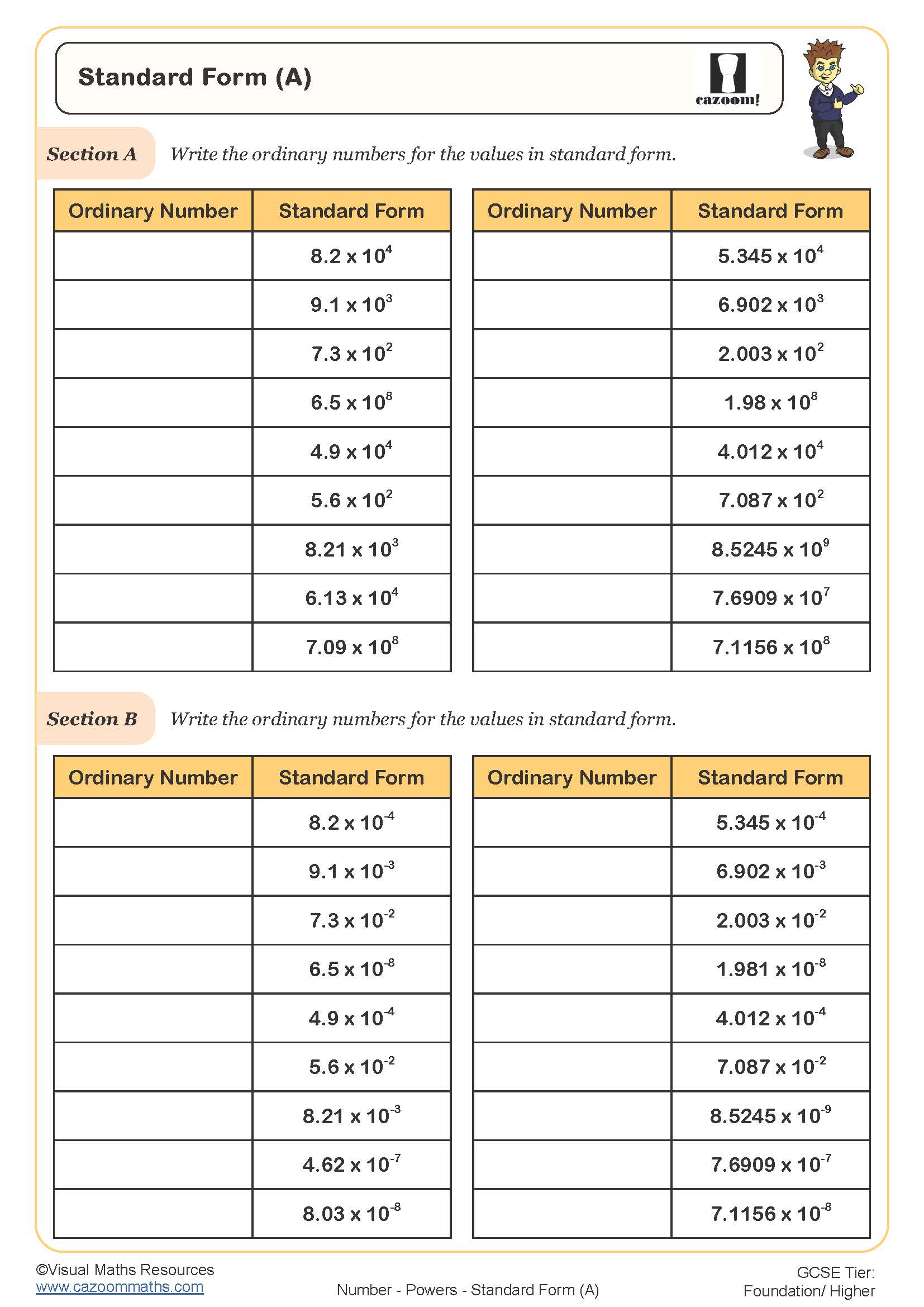
Standard Form (B)
Year groups: 7, 8
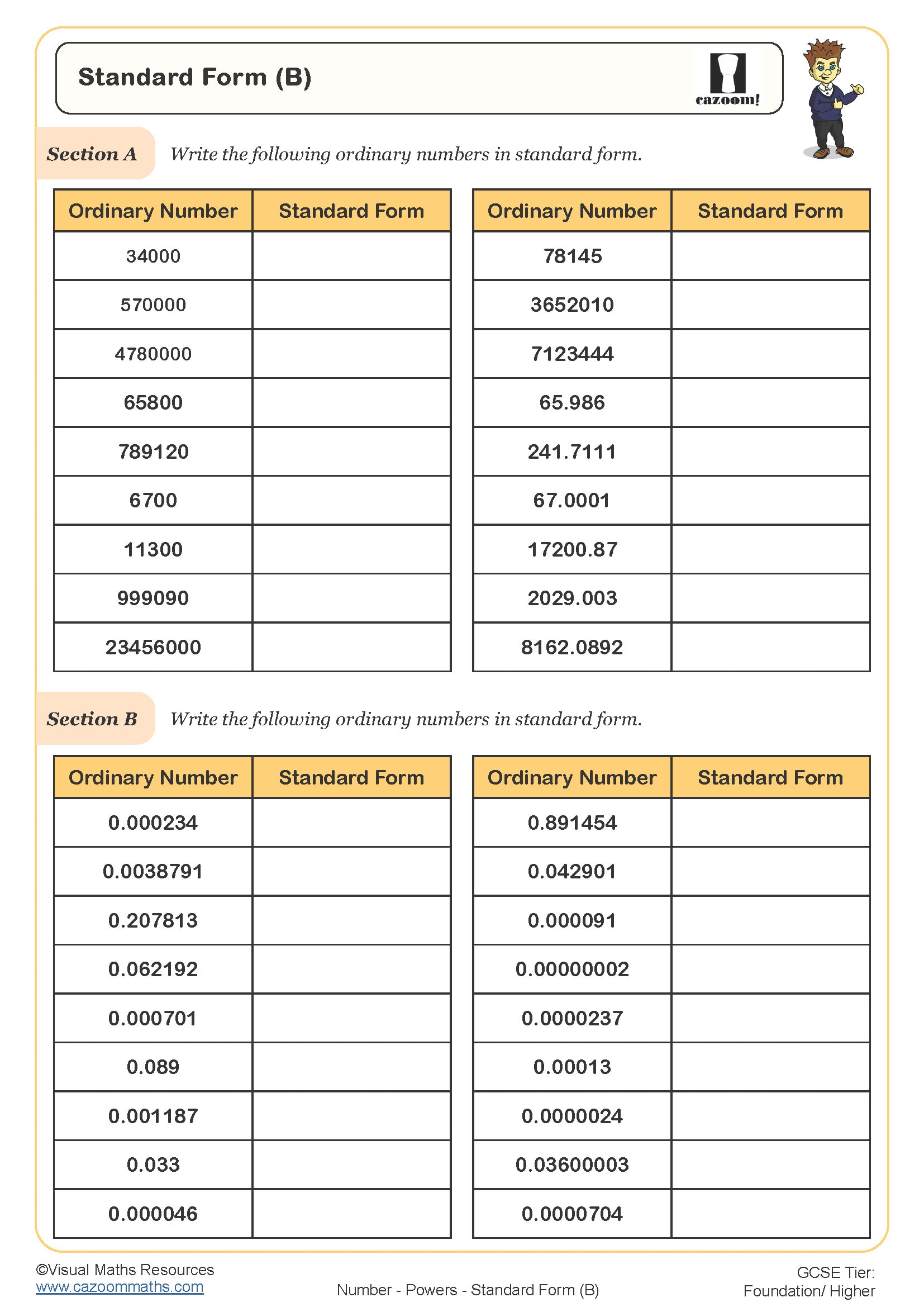
Standard Form Metric Units
Year groups: 7, 8
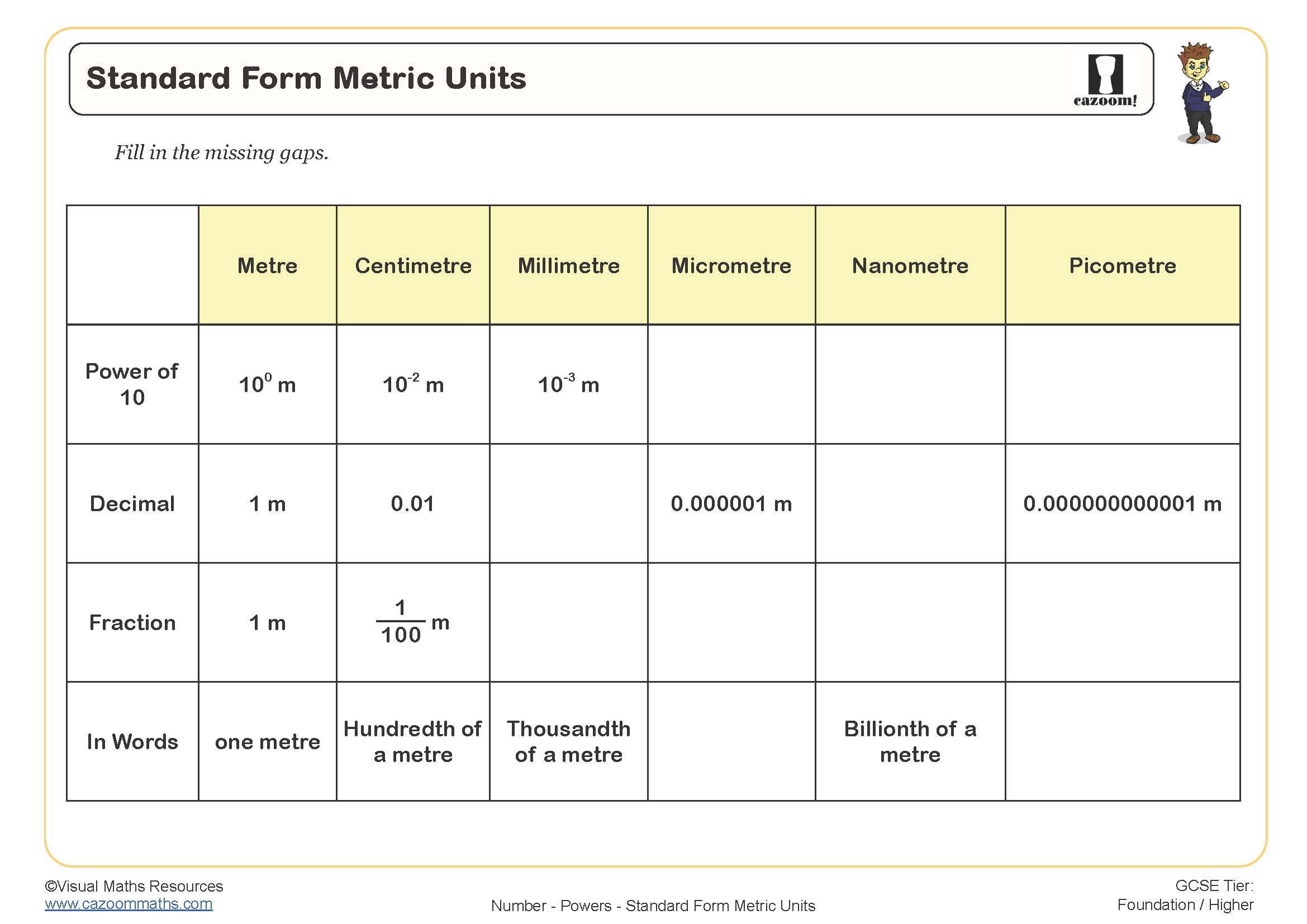
Add and Subtract in Standard Form
Year groups: 8, 9
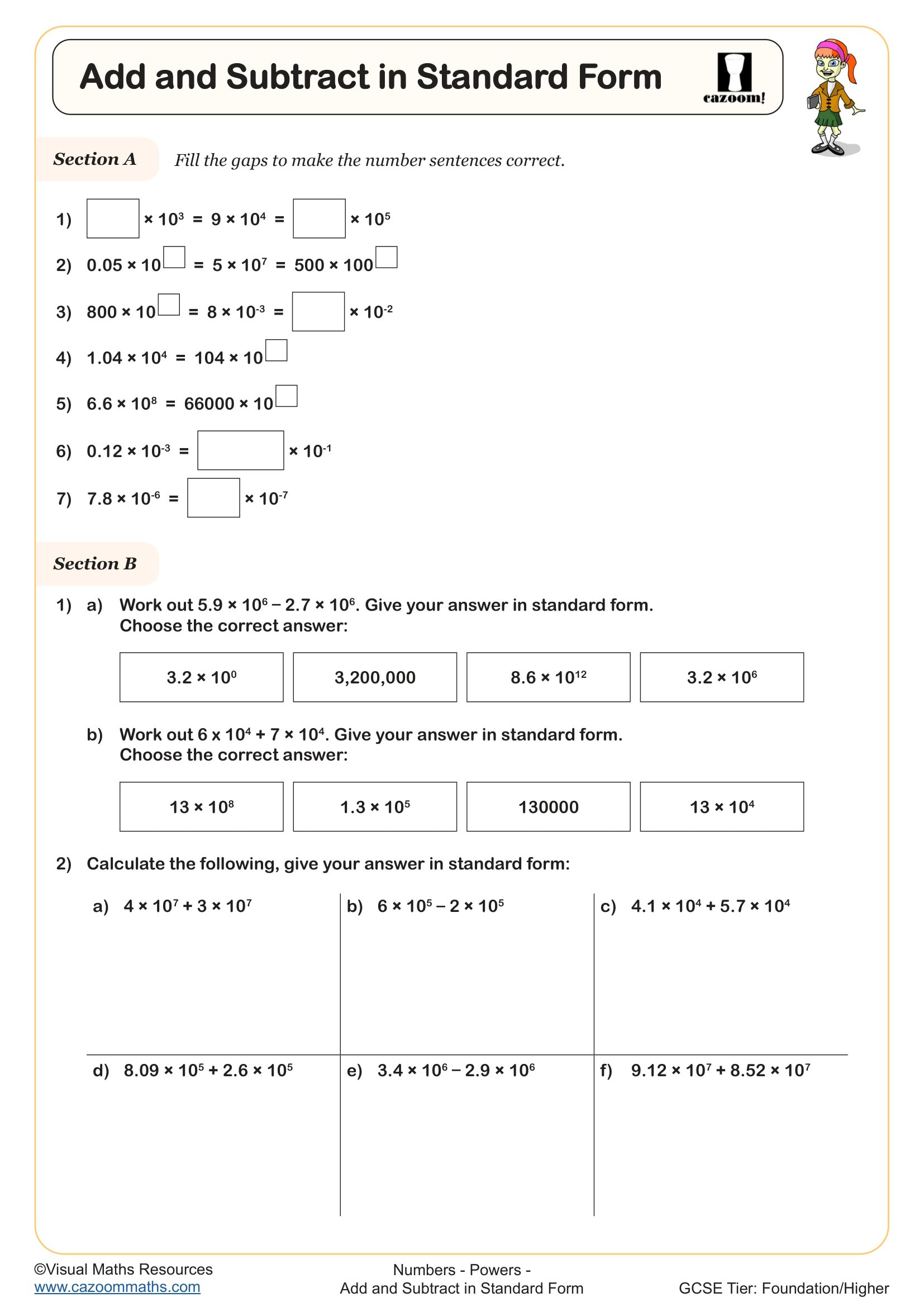
Manipulating Standard Form (B)
Year groups: 8, 9
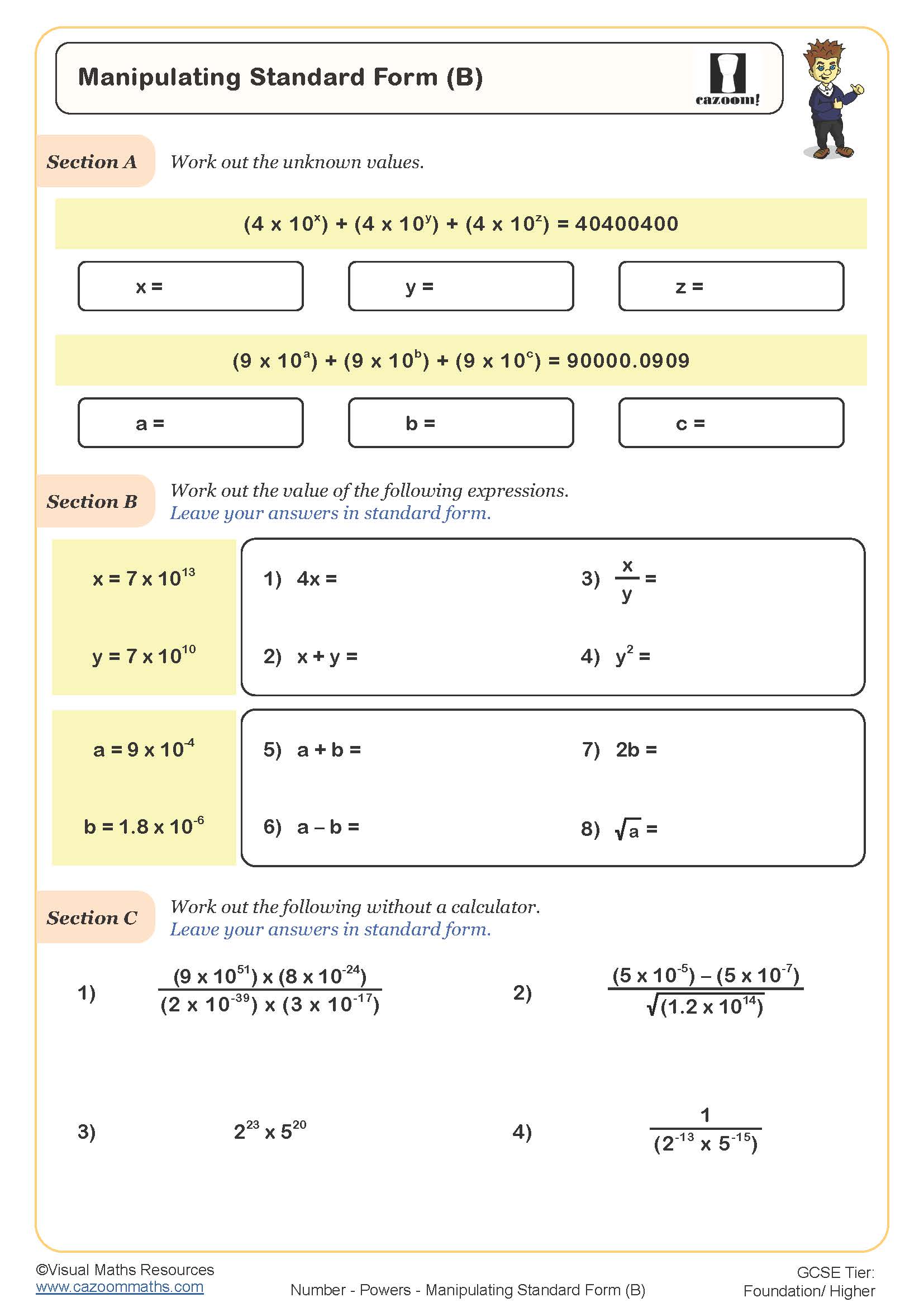
Standard Form Problem Solving
Year groups: 8, 9
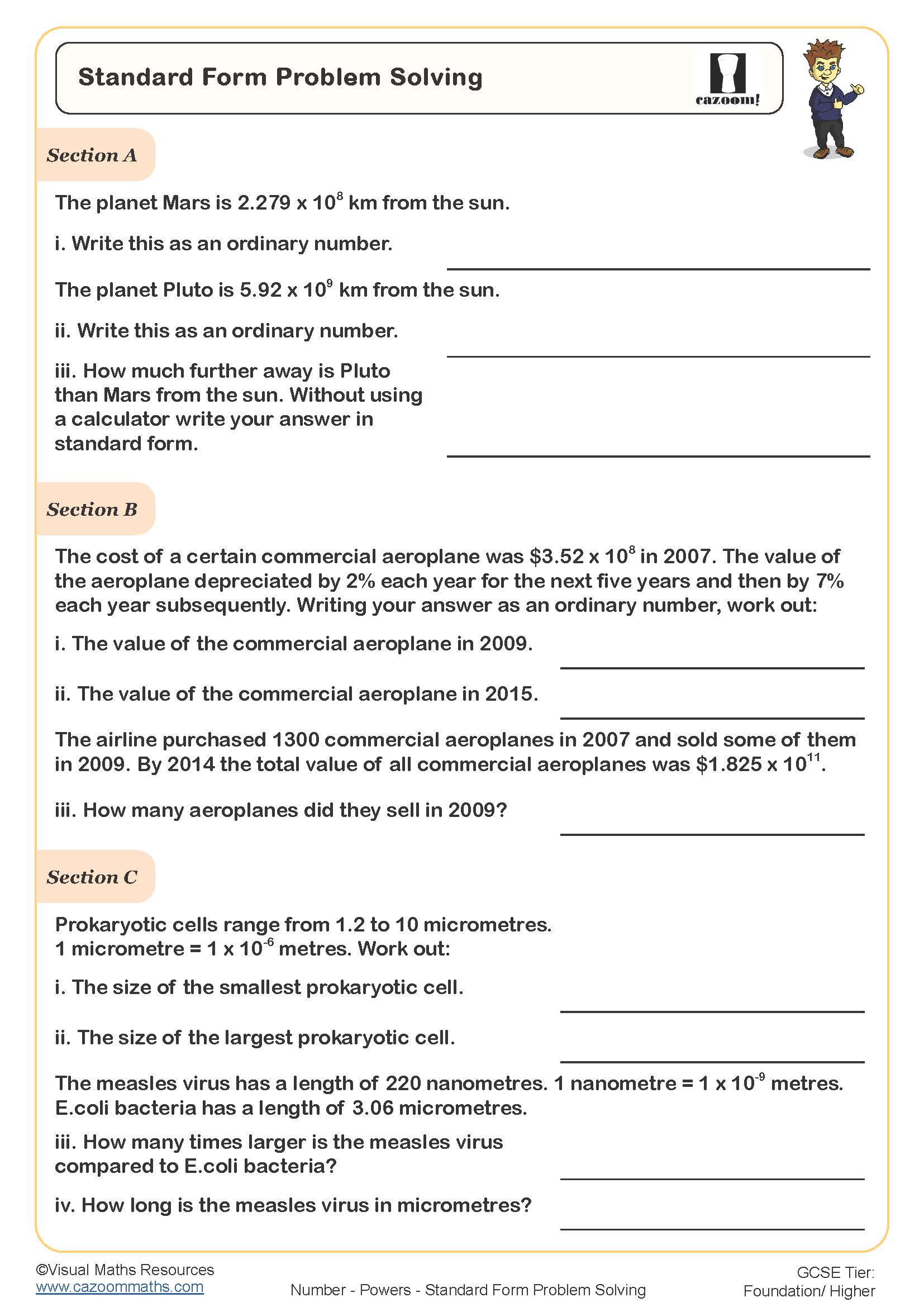
Calculations Using Indices (B)
Year groups: 9, 10
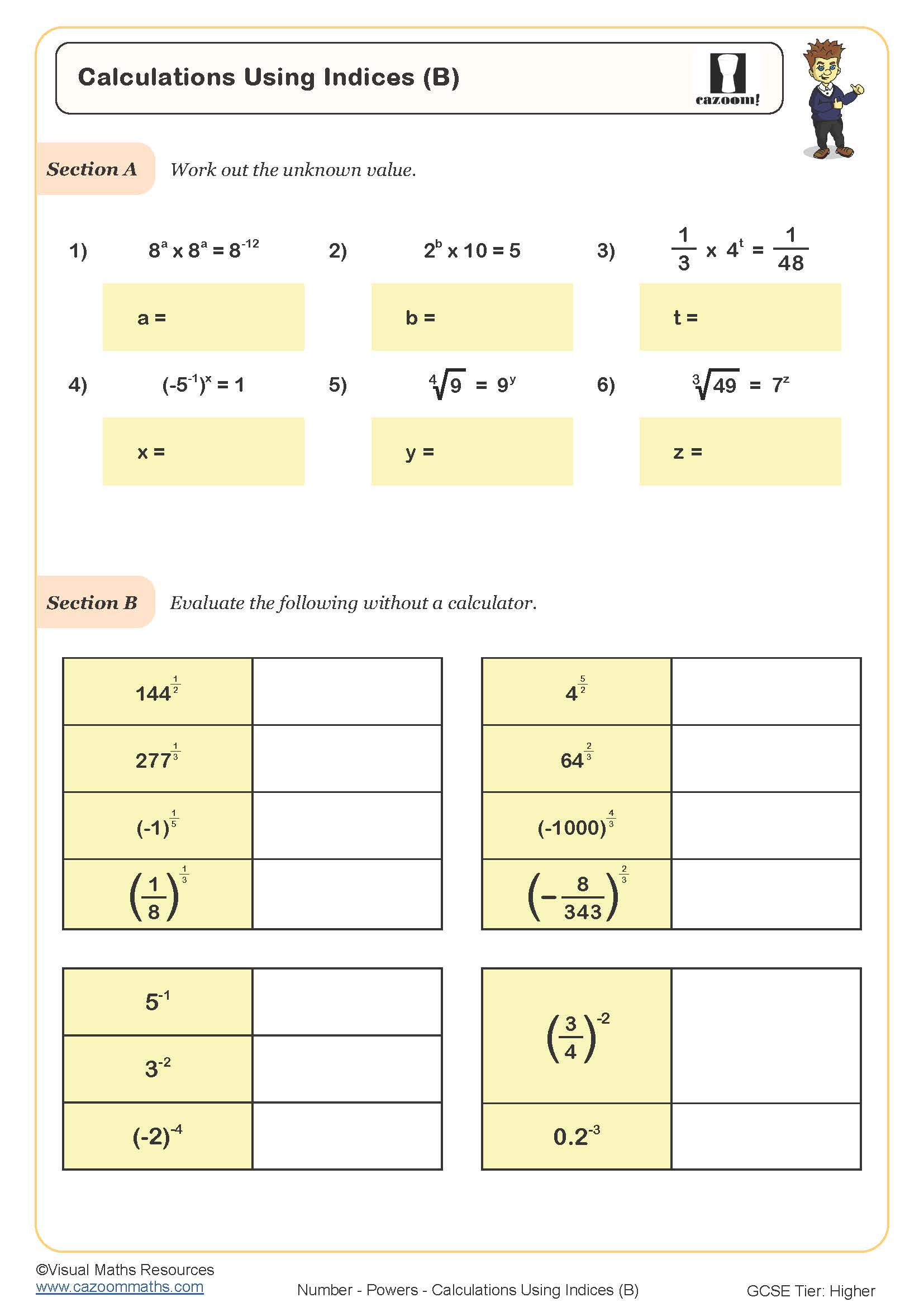
Manipulating Standard Form (A)
Year groups: 9, 10
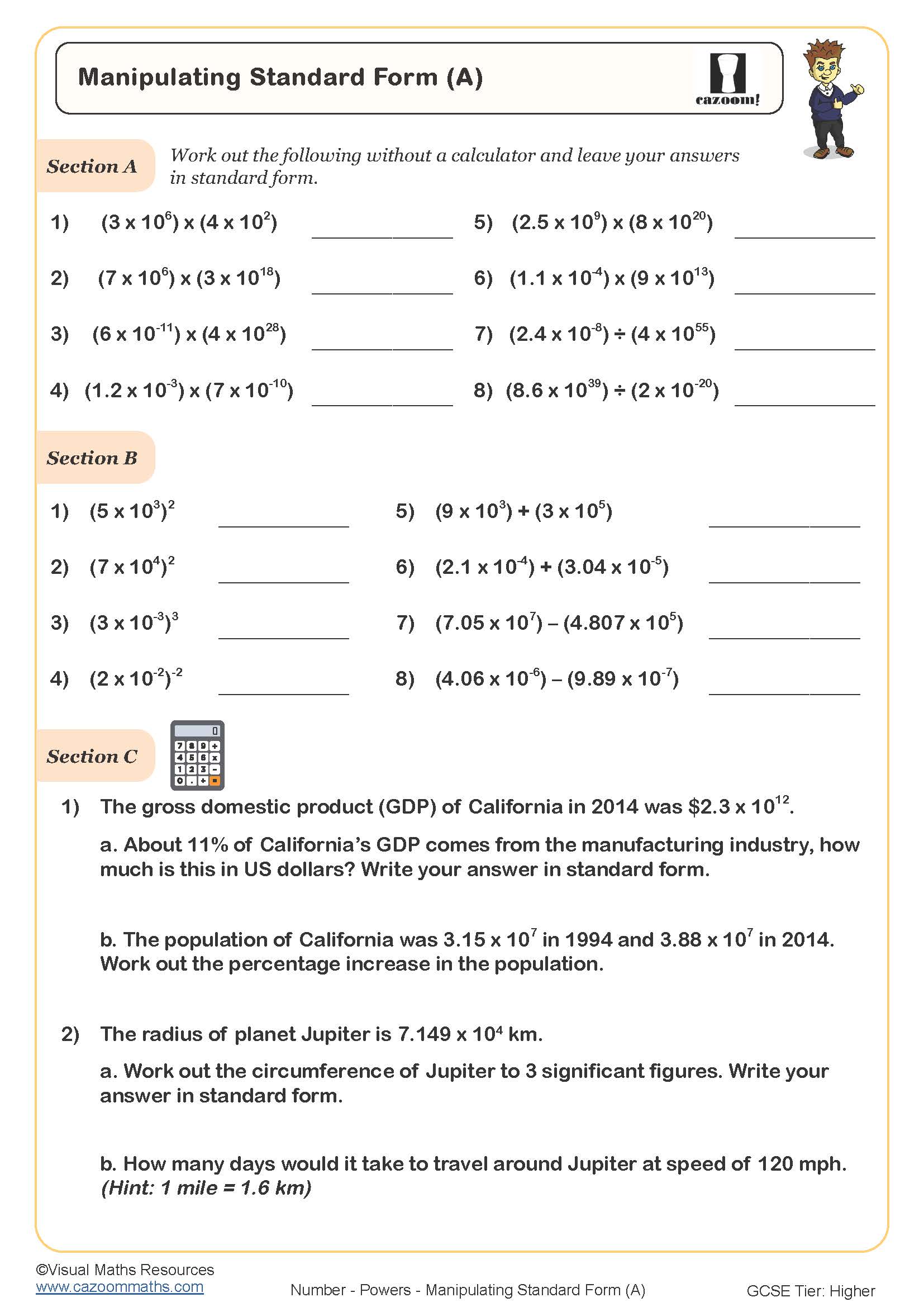
Powers, Roots and Indices
Year groups: 9, 10
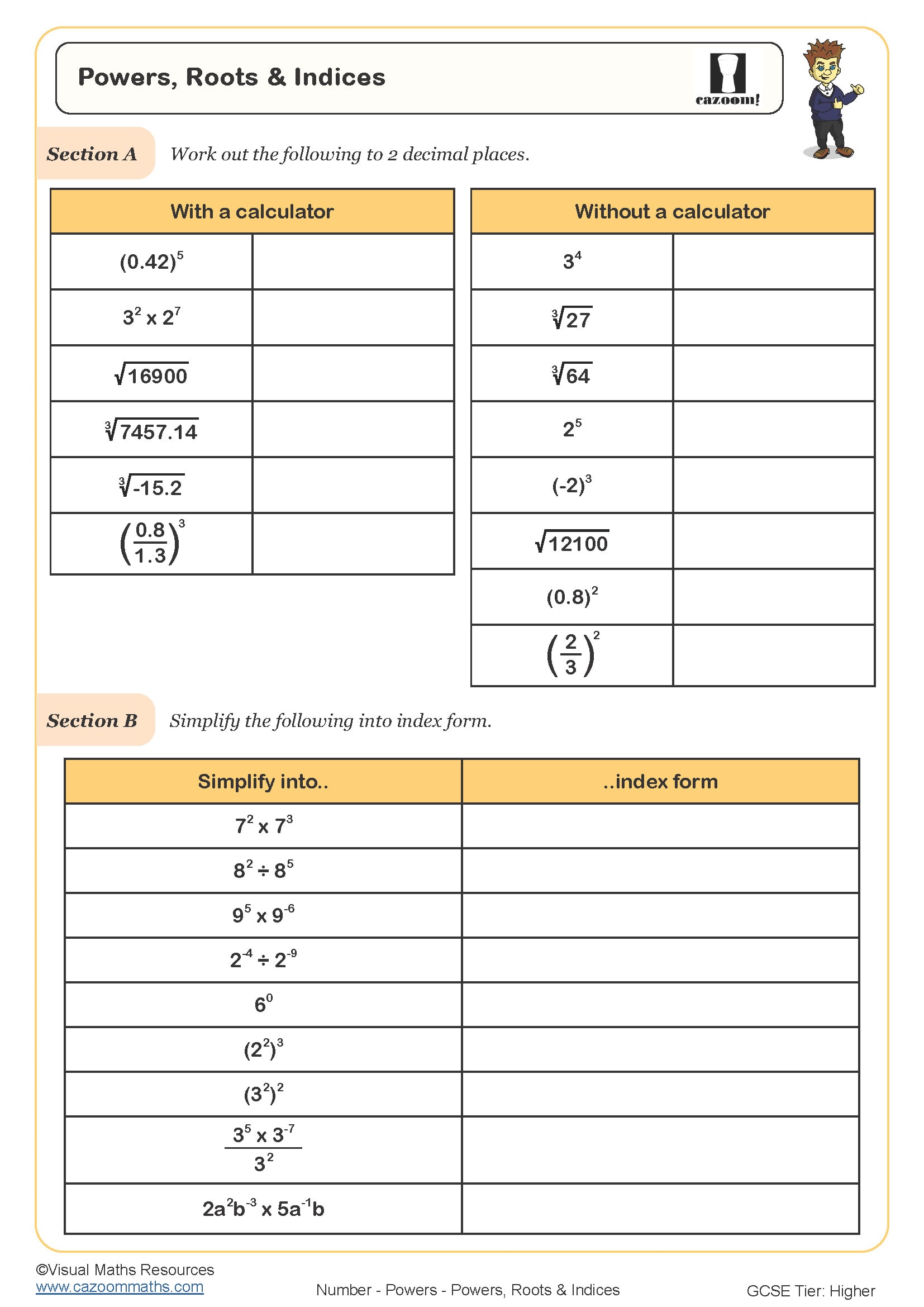
Powers, Roots and Indices
Year groups: 10, 11
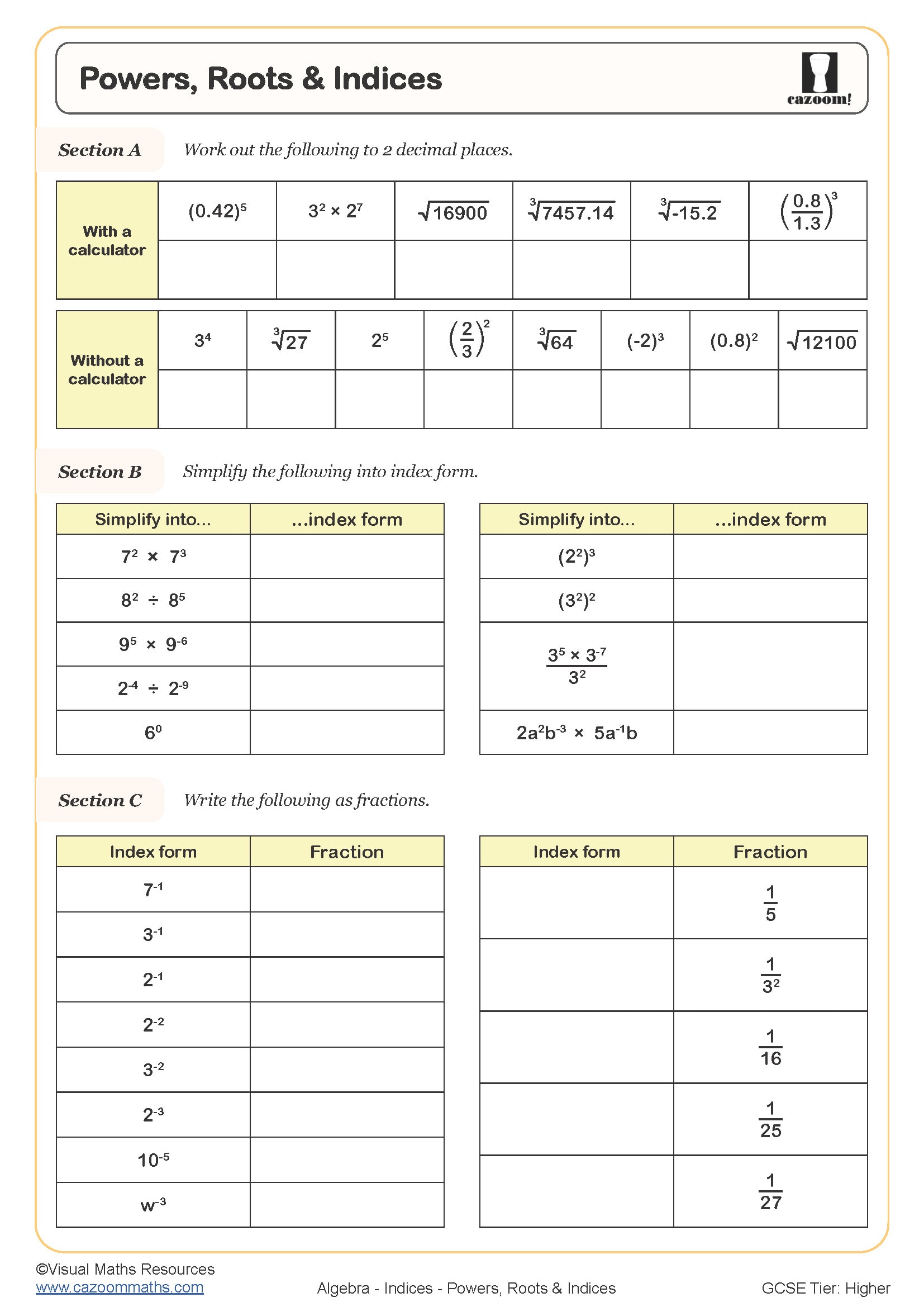
Multiplying and Dividing Exponents Worksheets
Our worksheets cover the whole breadth of the topic of powers and roots. After using our resources, students will be able to confidently multiply and divide exponents, understand the laws of exponents, and answer questions involving negative exponents. These resources break down the topic of powers into easily manageable chunks and help children on their way to success.
Explanation of Powers
When a number is multiplied by itself several times, it is usually represented in the form of a power.
Instead of writing 2 x 2 x 2 x 2, it is much more clear and concise to write 2⁴. This notation is useful when studying algebra, and learning it well helps to prepare students for more advanced maths questions using exponents and logarithms. Powers are useful for making a very large or very small number appear less confusing and have a range of applications outside of the classroom.
Real-Life Applications of Powers
Powers are often used when measuring areas and volumes.
The area of a room will usually be given in metres squared, which is type of power and a simpler way of writing ‘n x n’. Engineers, construction workers and architects will all use these units when designing and building a structure, and it is useful for homeowners to understand this measurement in order to buy the correct amount of wallpaper or flooring.
Using Powers in Science
Those working in the science and technology industries will also require a solid knowledge of powers.
There are huge distances between cosmic objects such as planets, moons and stars, so astrophysicists use powers to represent these distances in a simpler fashion making them easier to work with. For example the sun is 149.6 million kilometres from Earth, which is more commonly written as 1.496 x 10⁸ km. Powers are bound to appear during a student’s journey through life, so it is important to master the topic in school. Using powers worksheets both in and out of the classroom is an excellent way to support students’ learning and consolidate their knowledge, after all, you never know when they might need to understand powers.